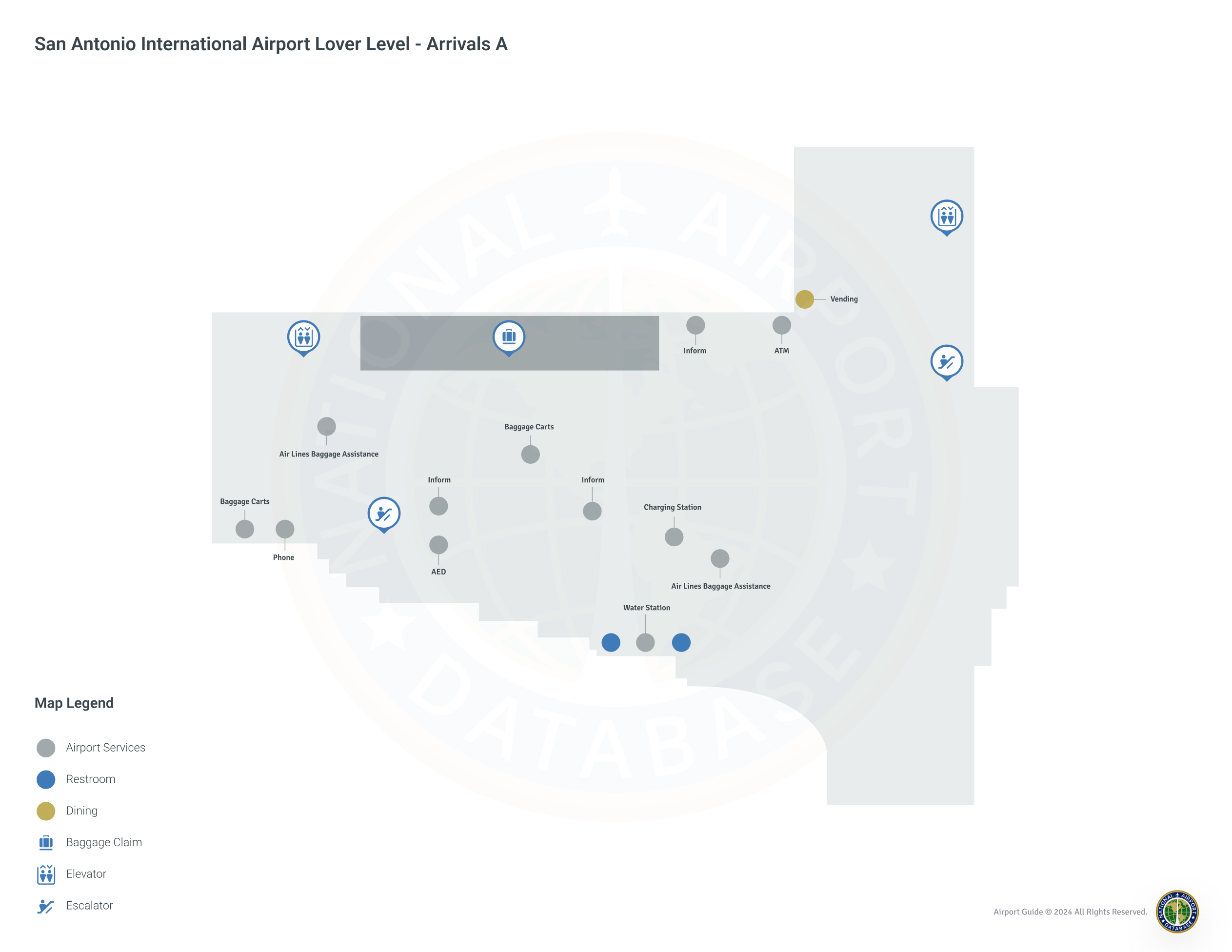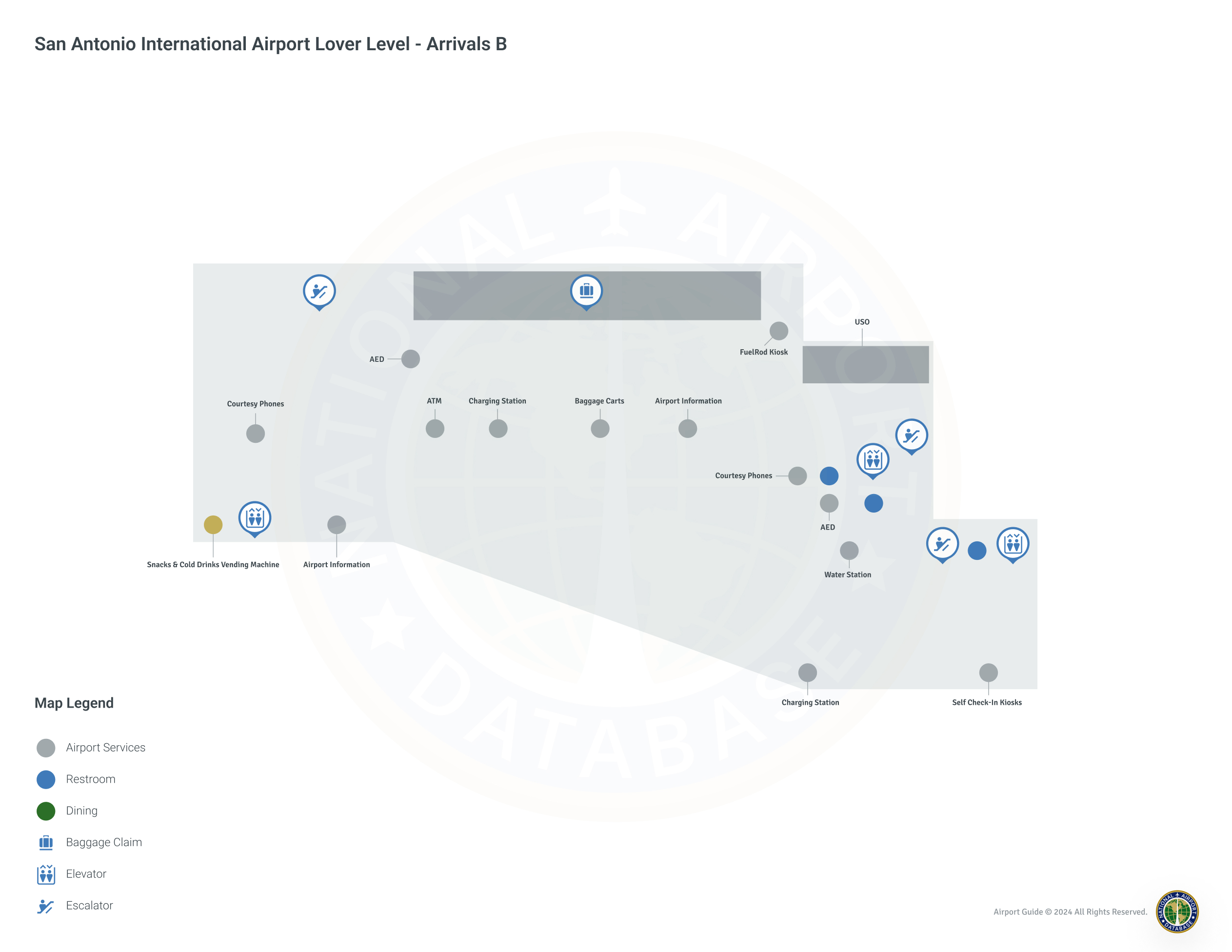San Antonio Airport (SAT) | Terminal maps | Airport guide

About San Antonio Airport
San Antonio International Airport (SAT) serves as the primary airport for San Antonio, Texas, and is located just north of the city center, about 8 miles from downtown. As a crucial gateway to South Texas, SAT handles both domestic and international flights, serving millions of passengers each year.
The airport has two main terminals, Terminal A and Terminal B. Terminal A, the larger of the two, hosts a majority of the airlines and offers a wide range of flights, including international destinations. Terminal B serves primarily domestic flights and is used by a select number of airlines. Both terminals are designed for passenger convenience and are equipped with a variety of amenities to enhance the travel experience.
Dining options at SAT reflect the local culture with a mix of Tex-Mex and traditional American cuisine, alongside fast food chains and coffee shops. The shopping experience includes a variety of stores, from local souvenir shops showcasing San Antonio’s rich cultural heritage to national retail brands for travel essentials and more.
SAT is committed to passenger comfort and convenience, offering services like free Wi-Fi throughout the airport, ample charging stations, and designated rest areas. Accessibility is a priority, with facilities and services designed to assist travelers with disabilities, including wheelchair access and visual assistance systems.
Transportation to and from the airport is facilitated by a range of options. Public buses operated by VIA Metropolitan Transit provide cost-effective connections to the city. Taxis, ride-sharing services like Uber and Lyft, and car rental agencies offer convenient alternatives for direct travel.
Parking at SAT includes both short-term and long-term options, conveniently located near the terminals, with shuttle services available for farther lots.
As San Antonio continues to grow as a major cultural and business hub, San Antonio International Airport plays a pivotal role in supporting this development, ensuring a smooth and efficient gateway for travelers entering and leaving the region.
San Antonio Airport Information
SAT Manager Information
San Antonio Airport Terminal Maps & Guides
San Antonio Airport Parking
San Antonio Airport Ground Transportation
SAT Airport Transit
SAT Airport Shuttle
SAT Airport Taxi
SAT Airport Limo
San Antonio Airport Rental Cars
San Antonio Airport Hotels
Airlines Serving San Antonio Airport
San Antonio Airport Routes and Destinations
San Antonio Airport Weather 04/15/2025
Weather ForecastTonight
63
Partly Cloudy
Tuesday
84
Decreasing Clouds
Tuesday Night
61
Partly Cloudy
Wednesday
86
Partly Sunny
Wednesday Night
64
Partly Cloudy
Thursday
90
Partly Sunny
Thursday Night
67
Mostly Cloudy
Friday
90
Mostly Cloudy
Friday Night
70
Cloudy
Saturday
88
Mostly Cloudy then Slight Chance T-storms
Saturday Night
68
Chance Showers
Sunday
86
Chance Showers
Sunday Night
64
Slight Chance Showers











